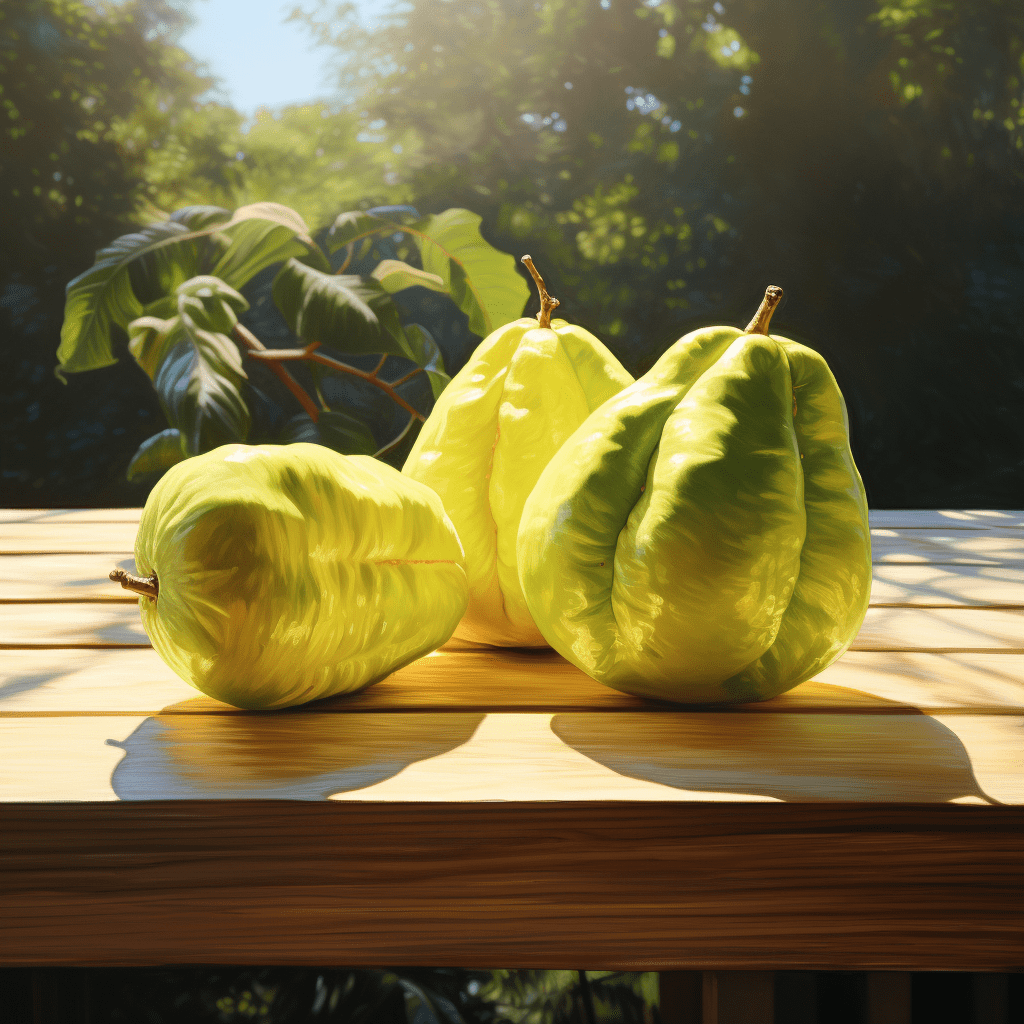By: The Foodie’s Avenue
In the world of vegetables, Choko is often overlooked and underappreciated. This peculiar vegetable captivates with its mysterious appearance and remarkable adaptability. Known by various names, including Chayote and Chouchou, Choko’s unique attributes make it a delightful addition to culinary explorations. In this article, we embark on a journey of discovery, unravelling the secrets behind this unusual vegetable and how you can use it in your cooking.

Also known as: Chayote, Chouchou, Mirliton, Christophine, Pear squash
What is choko?
Choko, also known as Chayote or Chouchou, is a fruit vegetable that belongs to the gourd family (Cucurbitaceae). It is native to Central and South America but is now widely cultivated in various tropical and subtropical regions around the world. Choko has a distinctive appearance, characterized by its pear-like shape, smooth, pale green skin, and a single seed in the centre.
Common types of chokos
Choko comes in several different varieties, each with its own unique characteristics and uses. Here are some common types of choko around the world:
- Green Choko: This is the most prevalent variety, characterised by its smooth, pale green skin and crisp, tender flesh. It is widely used in various culinary dishes, both raw and cooked.
- White Choko: This variety has a cream-coloured skin and a slightly sweeter taste compared to the green Choko. It is often used in desserts and sweet dishes.
- Spined Choko: As the name suggests, this type of Choko has spines or small thorns on its skin. It is less common than the smooth-skinned varieties and is typically peeled before cooking.

Buying tips
To buy chokos, follow these simple tips to ensure you select the freshest and best quality for your recipes:
- Look for Firmness: Choose chokos that feel firm and have no soft spots. Avoid ones that feel mushy or have bruises.
- Colour: Chokos can come in various shades of green. A shiny appearance indicates freshness, avoid ones with a yellowish or brownish hue, as they might be overripe or past their prime.
- Size: Chokos come in different sizes, so choose the ones that suit your recipe requirements. Larger chokos may have a milder taste, while smaller ones might be more tender.

Texture and flavour profile of choko
The flesh of Choko is crisp, tender, and mildly flavoured, reminiscent of a blend between a cucumber and a courgette. It can be eaten both raw and cooked, offering a versatile culinary experience. When consumed raw, it adds a refreshing crunch to salads and coleslaws. When cooked, Choko can be steamed, boiled, stir-fried, or baked, making it a delightful addition to soups, stews, casseroles, and various other dishes.

How to handle and prepare chokos for your recipes?
Handling choko is a straightforward process that begins with washing the chokos thoroughly to remove any dirt and debris from the skin. Next, using a vegetable peeler or knife, the chokos can be peeled, ensuring any spines or thorns are removed. After cutting the chokos in half, a single large seed can be easily scooped out from the centre. Depending on the recipe’s requirements, the chokos can be sliced or diced accordingly.

Thanks for your comment!